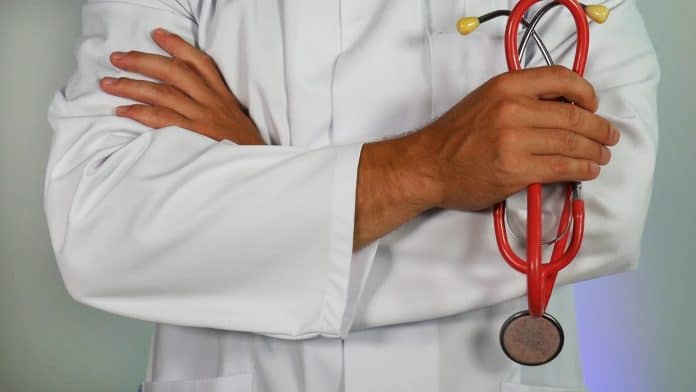By Mohammed Elamir, MD, FACP
When my father, a neurologist, suffered a stroke six years ago, I wanted to do everything in my power to help him. My father was the reason I became a doctor myself, and watching him struggle after his stroke inspired me to study all I could about stroke recovery. May is National Stroke Awareness Month, a time to raise public awareness about strokes. Every 40 seconds, someone in the United States suffers a stroke. In total, nearly 800,000 Americans experience a stroke each year. In 2021, 871 people in Hernando County were hospitalized because of a stroke.
A stroke occurs when blood flow to the brain is disrupted, either by a blockage or a hemorrhage in a blood vessel. When blood flow to part of the brain is restricted, it becomes deprived of oxygen. Nearly two million brain cells can die every minute during an acute stroke, potentially leaving behind lasting physical, cognitive, and emotional impacts.
For the fortunate 85% that survive, about half are left with moderate to severe impairments that require considerable care. Physical and occupational rehabilitation and other post-acute therapies are imperative to help survivors restore some lost function, re-learn how to complete daily tasks, and adapt to their disabilities.
Unfortunately, after about six months of rehabilitation their recovery typically plateaus, and most are released from therapy and told not to expect many further improvements. These therapies are focused on adapting, not on healing. Although learning to speak, walk, and write again is essential, rehab does not address the source of their deficiencies—the injury to their brain tissue.
Recovery doesn’t need to stop after six months. An evidence-based therapeutic intervention is helping survivors restore lost function, even years after their stroke. Peer-reviewed, published research suggests that a specialized hyperbaric oxygen protocol can restore additional function in stroke survivors.
Understandably, most people are skeptical when it comes to hyperbaric oxygen therapy, or HBOT. Thanks to tabloid news, celebrity hype, and fringe medical spas, HBOT has received a bad rap. But when administered by medical professionals using a scientifically backed protocol, HBOT can effectively increase blood flow and oxygen to damaged parts of the brain.
Let’s be clear: Necrotic (dead) brain tissue cannot be restored. But many stroke survivors have areas of the brain where the tissue is merely damaged. Brain imaging can help us identify this tissue and determine if these non-necrotic cells are the source of a survivor’s impairment.
I have treated stroke patients with this protocol, in combination with physical therapy, cognitive training and dietary coaching. This combination of interventions, known as the Aviv Medical Program, is only available in Central Florida and is delivering outstanding results to stroke survivors even years after the incident.
One of those survivors is Cindy, a resident of The Villages, who suffered a hemorrhagic stroke in 2018. When she came to us last year, she had simple goals. She wanted to walk without a cane. She wanted to comb her hair. She wanted to be able to drive her golf cart again.
Today, Cindy has newfound confidence in her ability to care for herself. Thanks to measurable physical and cognitive improvements, she is now walking confidently, driving her golf cart to the grocery store, and yes, even styling her own hair. She even traveled to Jamaica for a once-in-a-lifetime vacation, a trip she would have never even dreamed possible before coming to our clinic.
I will never forget the struggles my father faced after his stroke. Nobody should have to watch a parent, child, or other loved one needlessly suffer. For the hundreds of thousands of stroke survivors in the United States, there is still hope for recovery.
Unfortunately, this treatment currently is not covered by insurance. It’s a disservice to stroke survivors when their recovery is capped after just a few months of rehabilitation, even with scientific evidence that shows that we can still do much more for them.
We will continue to gather comprehensive data on the efficacy of HBOT and the Aviv Medical Program for stroke survivors so that one day everyone will have an opportunity to continue their stroke recovery journey.
Dr. Mohammed Elamir is lead physician at Aviv Clinics in The Villages, Florida.

